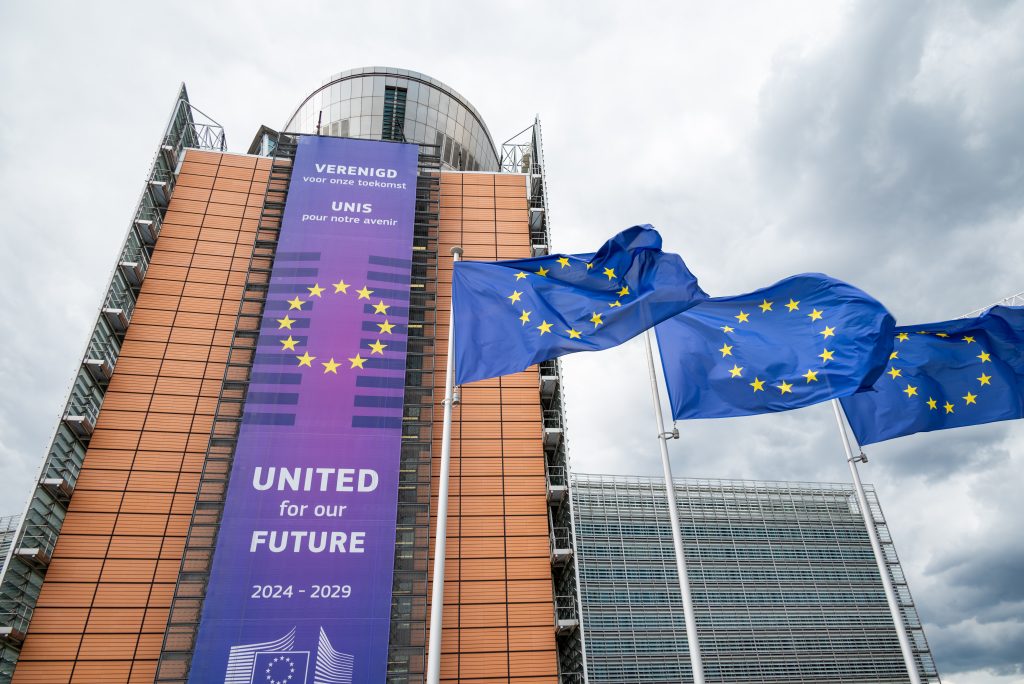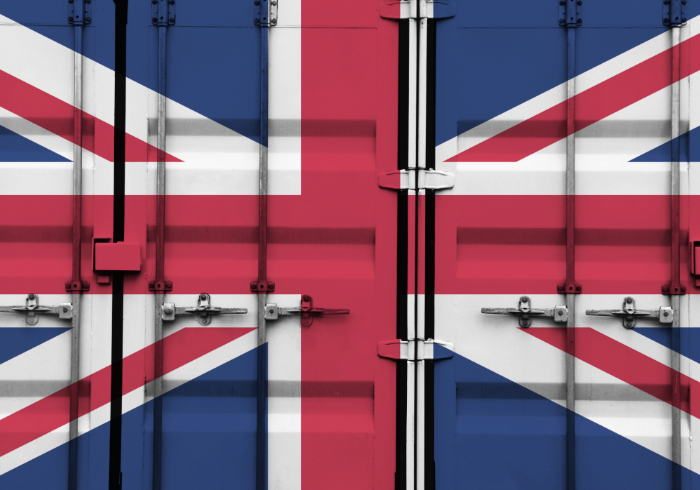After five years in the making, the European Union’s package of landmark sustainability regulation looks likely to be scaled back as the bloc revises its priorities and the global mood shifts on net-zero policies. Jenny Messenger explores how these changes are transforming corporate ESG strategies, supply chain finance and legal risk.
When Ursula von der Leyen became president of the European Commission in 2019, she swiftly spearheaded the European Green Deal, instigating a wave of ambitious regulation that would overhaul the EU’s approach to the climate crisis.
This included the Corporate Sustainability Due Diligence Directive (CSDDD), a far-reaching set of reforms that require firms to identify human rights and environmental impacts across all tiers of their value chains, and the Corporate Sustainability Reporting Directive (CSRD), which expands the scope and detail of ESG disclosures.
Mapping out the next three decades, the direction was clear: the EU would be making bold moves to decarbonise not only the bloc itself, but also foreign corporates that interact with it.
“The EU radically greened its regulatory book, and brought in a host of different ESG requirements,” says Nicolas Lockhart, partner at Sidley Austin.
As ESG obligations shifted to become mandatory rather than voluntary, corporates had to begin thinking far more carefully about their own operations and supply chains, Lockhart says.
But since then, the EU has entered a period of “soul-searching”, Lockhart says, following right-wing gains in the 2024 European Parliament elections and further spurred by recommendations in a report on the future of Europe’s competitiveness.
The report, authored by former president of the European Central Bank Mario Draghi and published in September 2024, warned the EU was facing an “existential challenge” amid stalling growth and fragmentation.
In response, the European Commission proposed sweeping changes to pare back its flagship sustainability regulation in February this year, under an ‘Omnibus’ package of changes that would reform rules in bulk. The European Parliament has called for even more stringent reductions.
Meanwhile, in the US, the Donald Trump administration has rolled back a number of sustainability policies. In 2025, this included abandoning the Securities and Exchange Commission’s defence of rules requiring disclosure of climate-related risks and greenhouse gas emissions.
What does this shifting landscape mean for corporate strategies in the EU and globally, and how is it reshaping sustainable supply chain finance?
Backlash in the EU
Under the European Commission’s so-called ‘stop-the-clock’ directive – part of the Omnibus package of changes proposed in February 2025 – sustainability reporting requirements under the CSRD would be postponed by two years for large companies that have not yet started reporting, as well as for SMEs.
Non-EU companies with a net turnover of more than €150mn in the bloc and either a subsidiary or a branch that generates more than €40mn in the region will still have to start reporting from 2028.
According to Omnibus proposals in a separate ‘substantive’ directive covering scope, both the CSRD and the CSDDD would apply to only the largest companies, in a bid to make it easier for companies to do business with the EU.
There are currently around 50,000 companies subject to the CSRD. The Commission has proposed reducing this to 11,700, while European Parliament proposals included limiting the number of in-scope companies to just 3,300 – fewer than the number that report now.
Changes to the scope of the CSDDD – one of the EU’s most controversial regulations – may see the threshold cut down from 7,000 to just 1,000 companies – or those that have €1.5bn in turnover and 5,000 employees.
The due diligence requirements could also be reduced to cover direct business partners only, while climate transition plans would only need to be adopted, not fully implemented.
For some, these concessions are not stringent enough. In an interview with Axios, Darren Woods, Exxon Mobil’s CEO, called the CSDDD a “disastrous law” for its impact on competitiveness.
In May, German Chancellor Friedrich Merz and French President Emmanuel Macron both called for the EU to repeal the CSDDD entirely.
“This is one of the strongest extraterritorial regulations,” Natalia Gindler Corsini, managing director of corporate compliance consultancy Prae Venire, tells GTR. “It doesn’t matter where the company is; if they do business with any EU country, they must comply with this directive.”
Matt Townsend, a partner at A&O Shearman specialising in trade, environmental and climate law, says that Trump’s return, the EU’s growth agenda and a refocus on defence and security have shifted perspectives on some of the Green Deal regulations.
“There is a cold wind blowing around some of these groundbreaking regulatory developments, which inevitably is having an impact on how the market looks at them for the time being,” he says.
“For many outside Europe, [the regulations are] a step too far. Their extraterritorial reach is very wide and very significant, and we are in a different era now.”

Regarding US companies, Taylor Pullins, a Houston-based sustainability and responsible business partner at White & Case, says the focus has been “channelled away from federal climate disclosure regulation” towards “better understanding what’s going on in Europe and the simplification efforts with the Omnibus”.
Pullins says the CSDDD is likely to be the piece of regulation that is most challenging for non-EU corporates, given its focus on accountability throughout the supply chain and its inclusion of indirect business partners.
“For US corporates, for example, there has not been such a level of attention on contractual cascading [previously],” he explains, referring to the commitments that companies can embed into their supply chain contracts to make sure suppliers meet ESG obligations.
“There is a cold wind blowing around some of these groundbreaking regulatory developments.”
Matt Townsend, A&O Shearman
While Pullins, who is also an experienced M&A lawyer, is yet to see any US companies divest their in-scope business activities on account of the rules, he is noticing firms pay more attention to the impact of European regulations.
“I’ve seen companies include within their evaluation of proposed dealmaking the effect of EU regulatory obligations, and that’s been more deliberate, on the acquisition as well as on the divestiture side,” Pullins explains.
“Have I seen divestitures proceed on that basis? Nothing specific comes to mind, but it’s certainly a strategic lens that they’re applying to the due diligence effort.”
Are deals being done?
According to Standard Chartered’s recent Future of Trade report, climate change and sustainability-related issues are the second most important factor shaping the future of the industry, after emerging technologies.
Yet the top three strategies corporates are looking to take are to increase digitalisation efforts, realign supply chains geographically and adjust treasury management strategies, rather than any that are explicitly linked to sustainability.
Given this landscape, are banks still inking sustainability-linked supply chain finance deals? The lenders that responded to GTR’s request for comments suggest they are, but at a slower pace.
Christina Gnad, head of working capital at Deutsche Bank, says: “We continue to see client demand for sustainable supply chain finance solutions, which remains a critical instrument to promote further resilience of supply chains while integrating risk considerations.”
At ING, Oliver Petersen, head of trade solutions, says the bank facilitated more than €2bn in new sustainable trade volumes over 2024, covering both supply chain finance and traditional trade transactions and expects to mobilise greater volumes in 2025.
However, Petersen adds that “trading volumes have slightly slowed given the dynamics hitting the supply chains of our clients”.
“Nevertheless, we continue to see good overall demand for sustainable trade transactions within the market. Companies across regions continue to focus more and more on embedding sustainability into their supply chains, driven by regulatory requirements, rapid digitalisation and growing pressure from investors,” he says.
There is also growing market demand for fresh financial solutions that can address scope 3 emissions, which Petersen says is giving rise to more collaboration between stakeholders.
The sector saw a flurry of sustainability-linked financing with key performance indicators (KPIs) in previous years, says Catherine Lang-Anderson, a partner at law firm A&O Shearman. “We did some really interesting deals where we got quite granular in terms of specific KPIs for suppliers, and how that would influence their funding on buyer-led programmes, for example.”
Since then, buyer-led programmes have not grown as much as anticipated.
The growth in litigation around sustainability has also had an impact, with so-called ‘greenhushing’ – the practice of underreporting sustainability initiatives – still an issue.
“We’re seeing corporates and banks greenhushing and showing increasing nervousness about labelling anything ESG, because of optics in the US and growing uncertainty over what ESG actually means,” A&O Shearman’s Townsend says.
But failing clear regulation, many corporates and banks are setting their own criteria. “In many regions, the market is moving quicker than the regulation,” Townsend says. “It’s important that we don’t stifle market innovation with regulatory overreach.”
Lang-Anderson points out that the lack of standardisation is leading to individual banks focusing on making sure suppliers in deals meet their own criteria.
“In LMA [Loan Market Association]-type green finance deals, for example, self-certification is often a feature – the idea being that these deals are quite relationship-based. The bank knows its customer, it knows the borrower, it trusts them to report transparently and fairly,” she says.
“But it’s always a debate in terms of putting these structures together – how robust are the targets you’re making, and if you’re labelling it green or sustainable, does that really stand up to scrutiny? All of these issues, in the absence of clearly defined frameworks, are going to continue to play out.”
And while large corporates may be struggling to get their heads around what is required under the EU’s regulation, the situation is arguably worse for SMEs.
Though SMEs do not have to report on their own activities, supply chain rules covering scope 3 suppliers often bring them into scope. Access to green finance is difficult without being able to provide banks with the right data – which can be a problem for under-resourced teams dealing with fragmented systems.
At the same time, smaller firms are facing challenging financing conditions, with cuts in interest rates only beginning to trickle down to them and collateral demands rising, says Miriam Koreen, senior counsellor on SMEs for the OECD’s Centre for Entrepreneurship, SMEs, Regions and Cities.

While identifying a set of core metrics that could both meet the needs of financial institutions and help ease the burden on SMEs, the OECD team found no unified approach from banks. “Some SMEs were being asked 20 questions, some were being asked 250,” she says.
But there is help out there, she adds. In addition to regional guidance (like the OECD’s toolkit to help SMEs in Asean states access green financial tools), some commercial and public development banks have paired sustainability-linked financing with support for ESG reporting, Koreen says. This can include providing extra consulting services or access to calculator software to help SMEs track their carbon footprint.
Sustainability on hold
As the European Parliament’s political parties negotiate proposals on the Omnibus package, clarity remains far off.
Delays have also been proposed for other sustainability regulation that is not part of the Omnibus, such as the EU Deforestation Regulation, which prohibits products linked to deforestation from entering the EU market.
That rule was supposed to come into force in December 2025, but could face another year of delays to implementation as the European Commission looks to minimise supply chain disruptions.
Until a clearer picture emerges, Sidley’s Lockhart notes that corporates that know they will be in scope “have more time to comply and most are using that time sensibly” to implement governance and data-gathering systems.
“The EU will remain at the forefront of this wave of ESG regulation. The question, I think, is how far ahead will the EU be?”
Nicolas Lockhart, Sidley Austin
Companies that are unsure whether they will be in scope or not “have tended to pause and reallocate resources”, he says, with many using the time to develop their processes.
“In my view, due diligence is an extremely valuable risk management tool for a company, because if something goes wrong in your supply chain, your best defence is to be able to say, ‘we’ve got robust processes for identifying and managing risk’, ideally following international guidance, such as from the OECD,” Lockhart says.
“But if something blows up and you’ve taken reasonable steps to identify and manage your liability, your chances of being held liable are lower, because you can say to the court, ‘well, we had a robust process and we did what could reasonably be expected of us’.”
For A&O Shearman’s Townsend, the “chilling effect” on the pace of change for net zero and the demand for sustainable supply chain finance is likely to be temporary.
Ongoing decarbonisation will see a growing need for sustainability reporting and sustainability-labelled financial products, including supply chain finance, he says.
“We’re seeing a minor market correction as a result of global politics, but it won’t derail the overall direction of travel. There’s too much momentum in the market.”
As Lockhart points out, there remains a swathe of other EU regulation that still applies.
The EU Battery Regulation, for instance, requires firms to have due diligence policies on the extraction and processing of minerals that go into the battery as of August 2025, though a two-year delay has been proposed.
“Even after the EU omnibus process, the EU will remain at the forefront of this wave of ESG regulation,” Lockhart says. “The question, I think, is how far ahead will the EU be?”






